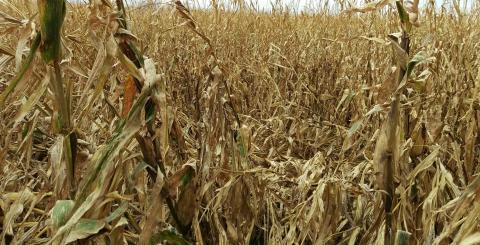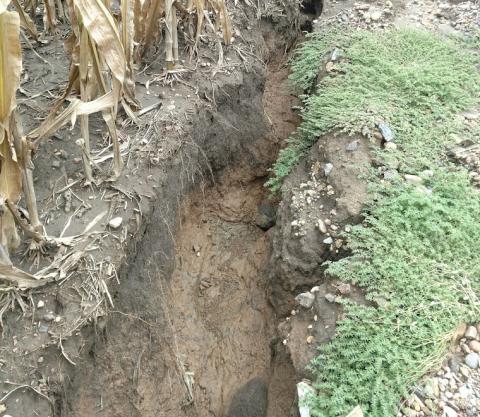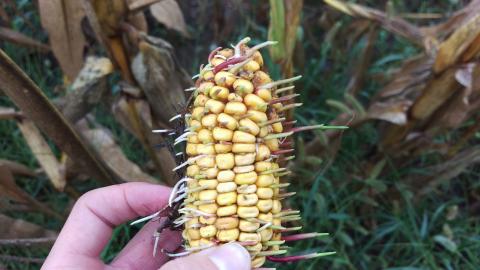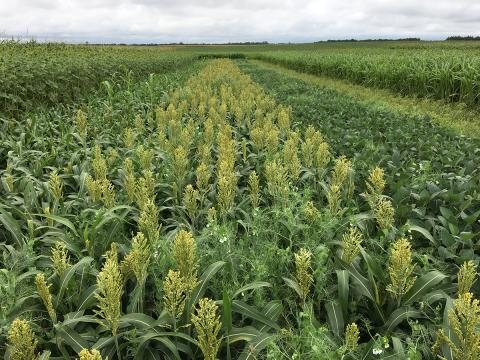Assess Corn Now to Avoid Harvest Complications
September 28, 2018
With an unusually warm August and rainy September, corn growers are urged to monitor their fields and prioritize harvest to avoid some of the challenges and losses faced in 2017.
Corn & Soybean Diseases Confirmed Sept. 13-28
September 28, 2018
Various corn stalk rots lead the list of corn and soybean diseases confirmed by the UNL Plant and Pest Diagnostic Clinic September 13 - 28. Diseases are listed by reporting district.
Podcast: A Row Crop Farmer's Perspective on Cover Crops and Cattle Grazing
September 27, 2018
Chad Dane, a farmer from Clay County, Nebraska, discusses his experience using cover crops in a corn-soybean rotation on this week's UNL BeefWatch podcast.
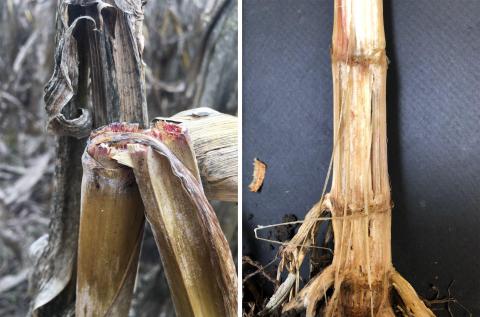
Stalk Rot Diseases in Nebraska Corn Fields
September 13, 2018
Knowing the risk factors for stalk rot can help you evaluate those fields first and prioritize your harvest schedule accordingly. Submitting plant samples and determining which stalk rot is present can help you better prevent or manage it in future years.
Extension Crop Reports Sept. 11, 2018
September 12, 2018
Extension Educators from across the state report on crop progress in their areas. Generally crops are maturing quickly with the warmer temperatures this week. Stalk rots are a concern in corn and growers are encouraged to check fields and prioritize harvests accordingly.
Corn and Soybean Forecast for Record Yields, Production
September 12, 2018
USDA forecasts record yields for Nebraska corn, soybean, sorghum and sugarbeet and record production for corn and soybean. Nationally, corn is forecast up 2% from 2017 and soybean, up 7%.
Why are Corn Kernels Germinating on the Ear?
September 12, 2018
What makes corn kernels start sprouting on the ear and what are the implications for harvest and storage? Growers in south central Nebraska are seeing the damage as they scout.
Double Cropping Pulses with Short-Season Crops, Forages, and Cover Crops in Eastern Nebraska
September 6, 2018
A research project in eastern Nebraska is evaluating a double crop production system as a potential alternative to the traditional corn/soybean rotation. Following an early season crop of yellow field peas, short-season crops (corn, soybean, grain sorghum, millet and sunflower) and annual forages (forage sorghum and sorghum-Sudangrass) were planted.
